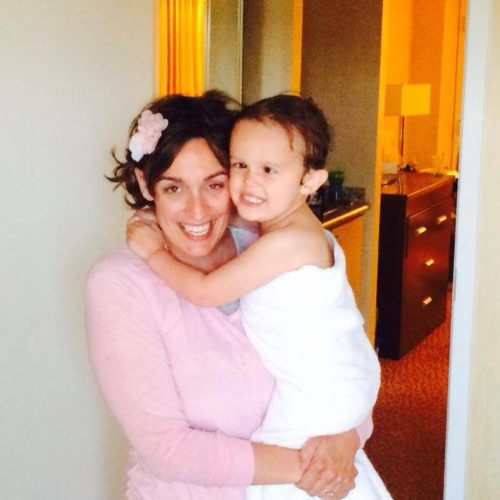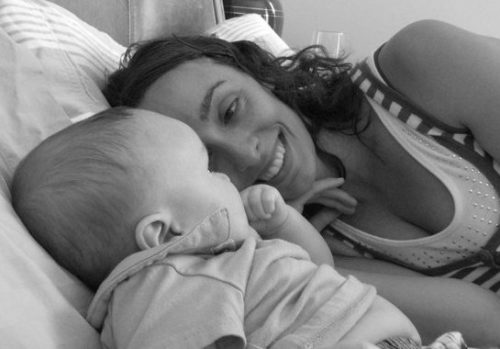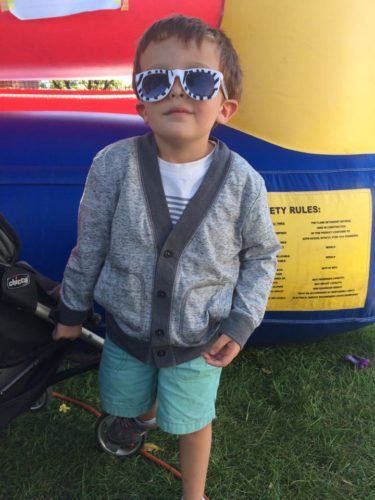I’m sitting in the passenger seat of our mini-van attempting to keep my twin four-year olds entertained on a long drive home. My face is hot and tingly, and my palms slick as I relive an unpleasant encounter at a Cracker Barrel somewhere off I-95. While trying to pay for my family’s meal, my debit card was declined. I know that it was not in error; my husband and I have exactly zero dollars to our name.
“I have to get a job,” I say to my husband.
I spend the rest of the drive home, swallowing panic, ignoring my kids and searching for work on my phone.
A few days later, I sit down to take a real look at my family’s finances, something I haven’t done in more than four years, and I discover a problem. We are spending more money than we are making. Every. Single. Month. I have a background in statistics, so calculating an expense to income ratio is simple for me. But, it isn’t easy. Since July 2013, my financial management strategy has been to check our accounts every four to six months while crossing my fingers and grimacing, praying for the number to be above zero. Actually looking at the numbers means facing up to years of bad habits, means feeling the shame of how circumstance and neglect has stripped my family of financial security. It also means rebuilding another aspect of our lives decimated by cancer.

I pull into my co-worker’s driveway and mouth, “I’m sorry” silently while she climbs into the front seat. I have been picking her up ever since I found out she was taking an Uber more than 20 miles every day to get to work. But during today’s commute, I’ll be on a call, and I hope my co-worker understands. A woman I greatly admire is on speaker phone asking my opinion about a drug development company she is considering investing in. The company will be led by a well-known scientist in the world of pediatric cancer, and their first undertaking will potentially treat children with diffuse intrinsic pontine glioma (DIPG), the same type of cancer that killed my son, Sam. The woman I admire and I discuss the problems surrounding treatment for DIPG and the barriers to drug development for rare pediatric populations. We talk about how a piece of legislation she worked to pass in 2014 may not incentivize the pharmaceutical companies enough to increase the rate of progress for childhood cancer. We talk about how much we miss our sons.
I hang up the phone, tie an apron around my waist and start preparing the restaurant to open. The atmosphere is tense because the owner and the head chef, also known as the owner’s son, are fighting about gazpacho prep. I have only worked about a dozen shifts, but I know the tension building up in the back of the house will erupt on the wait staff soon. Suddenly, the owner launches a bowl across the kitchen, storms into the dining room and starts yelling about the smudges on the windows, about straw wrappers in the mulch on the patio, about how badly we messed up wait times on pick-up orders the previous week.
“It was a clusterfuck,” he screams, “one for the books!”
A few minutes later, I answer the phone to take an order for pick-up. I can hear the owner haranguing our veteran server about something. I try to focus on what the customer is saying, but soon the lecture turns into a shouting match. Apparently, the server had written a check to one of the restaurant’s food distributors and the handwriting, in the owner’s estimation, was illegible enough to warrant verbal abuse. The owner takes a threatening step towards the veteran server, arm cocked and a feral look in his eyes. I hang up the phone and back away from what is turning into a violent situation about how legibly a check was written. I want to run. I want to walk out the door and never walk back in. I want to tell the owner and his son exactly what they can do with their gazpacho. I want to call the Better Business Bureau. I want to write negative reviews of the restaurant on Yelp.
But I don’t.
Because I know we have just a few hundred dollars in our bank account. I know our oven is currently not working, and we had to pay a plumber this month to fix part of our septic tank. I know that we have to pay our mortgage and the second mortgage we took out last year to fix our roof and HVAC.
So, flushed with anger and contempt, I combat my flight instincts and the tears threatening to fall and expose me as someone who cares. I tell the veteran server that he doesn’t deserve to be treated like that by anyone for any reason. I gather my courage and calmly tell the owner that we would like to be treated with a modicum of respect.
“I don’t have time for that,” he replies.
For the rest of my shift, I tiptoe through the kitchen, eyes down, feet fast, voice quiet. I focus on my customers. I drive to the bank after work feeling dazed and stripped of energy to deposit the cash I made and ensure my family stays in the black. I show up the next day to do it all again.

A few days later, I sit across from a friend and professor at the college where my husband teaches. We are prepping for an exercise on extrinsic and intrinsic motivation we will lead in her upper-level business leadership class. The exercise will ask students to role play. They will imagine they are a scientist who has made a breakthrough discovery in treating pediatric cancer and now has to decide whether to bring the discovery to market. It’s a complicated thought exercise. We ask the students to consider the process of giving intellectual property rights to the academic institution they are employed by, to imagine the personal feelings and connection they might have to their work and balance those with their drive to make a difference and with the monetary desires of their employer and their own need to make money.
The students are mostly reluctant to answer the questions the professor has prepared, and when they do, they seem to have only considered the scenario from a removed standpoint.
“You have to take the drug to market,” one student chimes in. “You owe it to the university.”
“I wouldn’t take the drug to market,” another responds, “because it would take time away from other opportunities as a researcher.”
No one mentions the children that could potentially be saved by the discovery. No one even mentions cancer. I can tell that my friend the professor is slightly alarmed. The exercise is not going as planned. I, by contrast, am excited. I know I am about to offer a first-person account from the other side of the fence. I am about to share the story of With Purpose, the nonprofit organization I founded and have been running for three years in honor of Sam.
I feel like my story breathes life into the exercise. I can sense the mood in the room shifting from indifferent to engaged, excited even. The students start asking questions about my plans for the organization, about our funding strategy, about Sam. I am connecting with them, bringing them into the fold for a few moments, showing them some careers are built on more than monetary incentives.
Many students stay after class to thank me, to hug me, to tell me their own stories and to offer their support. I leave the room full of adrenaline and gratitude. Seeing the students moved, inspired, motivated is a healing balm to my wounded soul. Sharing Sam with them brings him to life — moves him out of my memory and into the present moment. I receive emails from several students asking how they can get involved, volunteering their time, telling me that the exercise impacted them.

Following Sam’s diagnosis, I had trouble explaining myself to people. If someone asked, “what do you do?”, I would stutter. I might say something about being a market research consultant or about leaving a career to take care of my terminally ill child and my newborn twins. In my lowest moments, I described myself as a “cancer mom”. I might mention off-handedly that I run a nonprofit but always with the caveat that I didn’t make any money doing so. I think I was answering a different question and maybe even the question those asking intended me to answer: “what do you do for money?”
A part of me is ashamed to admit I am a waitress. Waitressing is something I did to pay my way through college and graduate school and to supplement my income in my twenties. The shame comes from a place deeper than personal experience. I think it comes from our society’s conflation — one I have internalized — of identity and career. The idea deeply implanted from a young age that what you do for money is who you are in the world. This error in thinking is why I feel worried that someone I know will come into the restaurant and see me in my apron. It’s why upon hearing I was waitressing, a relative looked at me sourly and said “Waitressing? That is the height of desperation, isn’t it?”
That is the society we live in. That is what we place value on. But I know it’s an illusion because when faced with life and death decisions, money loses meaning. The answers to the question, “what do you do?” shift dramatically.
What you do is hold your people close and love them.
What you do is find gratitude for what you have knowing that nothing is permanent.
What you do is the best you can.
The societal assumption that waitressing is a lowly job fit only for directionless people makes me angry. The idea that someone would take me for “just a waitress” makes me defiant. And the anger and defiance give me a platform to stand on. Without the illusion that I am what I do, the shame of admitting to others I am a waitress dissolves and gives voice to a truer version of myself.
Now, I tell everyone, even the customers at the restaurant, about Sam. I tell them that taking care of someone with terminal brain cancer has financial fallout. I tell them about the problems surrounding treatment for pediatric cancer in the U.S. I tell them I am the executive director of a nonprofit organization … and a waitress. But, more importantly, I tell myself all of those things.






